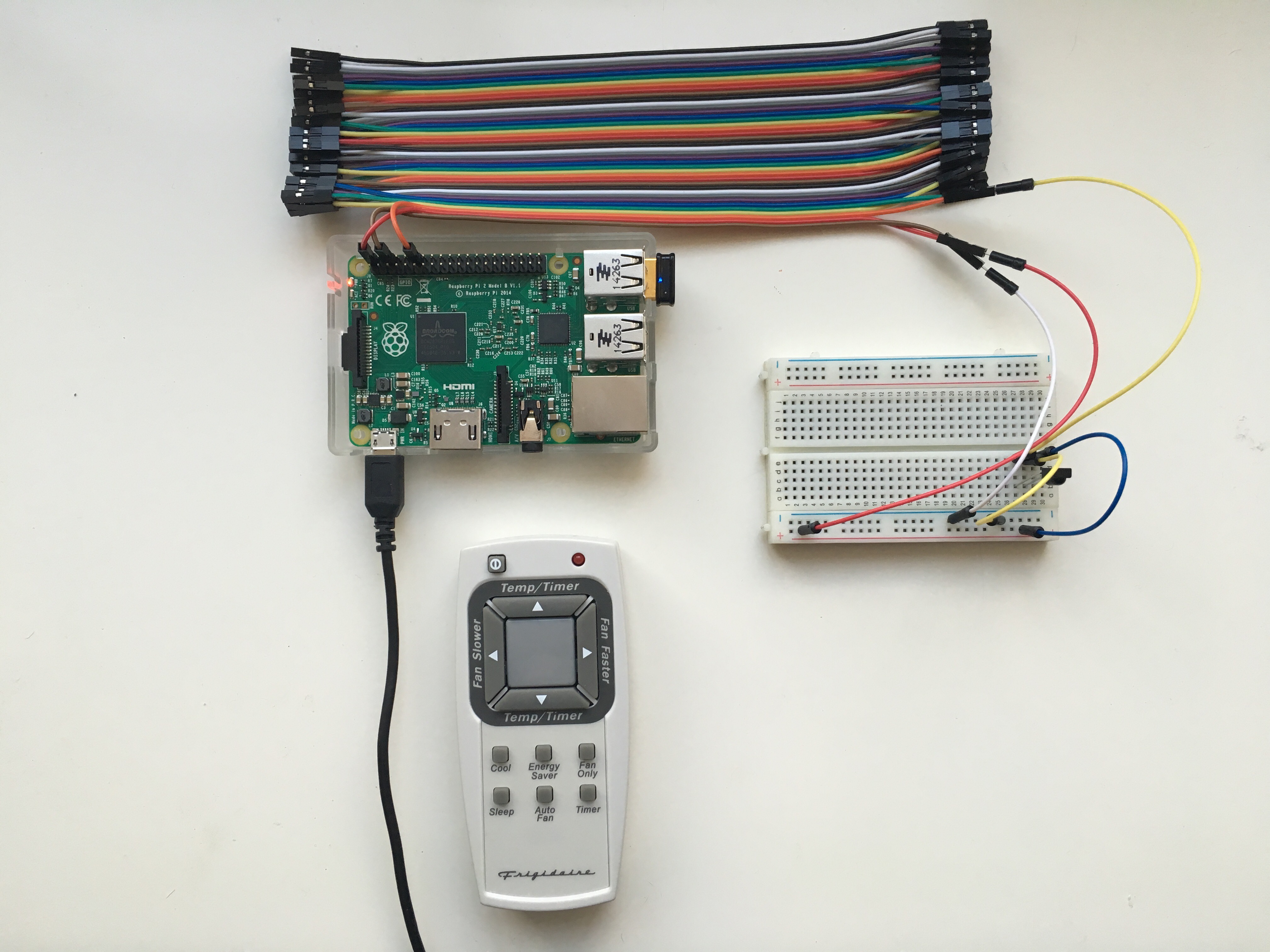Raspberry Pi Remote: Your Ultimate Guide To Remote Control Mastery
Let’s talk about something that’s taking the tech world by storm – Raspberry Pi remote. Yep, you heard it right. This tiny yet powerful device has become a game-changer for enthusiasts, developers, and DIY lovers alike. Imagine being able to control your Raspberry Pi from anywhere in the world with just a few clicks. Sounds cool, right? Well, buckle up because we’re diving deep into the world of Raspberry Pi remote and uncovering all its secrets.
Now, you might be thinking, “Why should I care about Raspberry Pi remote?” Great question! The ability to remotely access your Raspberry Pi opens up a world of possibilities. Whether you’re managing servers, automating your home, or just tinkering with projects, having remote access makes everything smoother and more efficient. So, let’s break it down and see how you can harness this power.
Before we dive into the nitty-gritty details, let’s set the stage. This article is packed with tips, tricks, and insights to help you master Raspberry Pi remote control. We’ll cover everything from setting up your system to troubleshooting common issues. So, grab your favorite drink, and let’s get started!
- Vanessa Marcil Nude The Untold Story And What You Need To Know
- Amber Ajami Nude The Untold Story Behind The Headlines
What Exactly is Raspberry Pi Remote?
Alright, let’s start with the basics. Raspberry Pi remote refers to the ability to access and control your Raspberry Pi device from a remote location. It’s like having a virtual hand that lets you interact with your Pi without physically being there. This is achieved through various methods, including SSH, VNC, and even custom-built solutions.
Here’s the deal – if you’re working on a project that requires constant monitoring or tweaking, having remote access is a lifesaver. You can check on your system’s status, update software, or troubleshoot issues from the comfort of your couch or even from the other side of the globe.
But wait, there’s more! Raspberry Pi remote isn’t just for tech wizards. With the right tools and a bit of guidance, anyone can set it up and start using it. In the next section, we’ll explore the different methods you can use to achieve this magic.
- Cece Rose Onlyfans The Ultimate Guide To Her Rise Content And Legacy
- Brittney Atwood Nude Separating Facts From Fiction And Exploring The Bigger Picture
Methods to Set Up Raspberry Pi Remote
There are several ways to set up Raspberry Pi remote, and each method has its own advantages and quirks. Let’s break them down one by one:
SSH: The Simple and Secure Option
SSH, or Secure Shell, is one of the most popular methods for remotely accessing Raspberry Pi. It’s secure, easy to set up, and works like a charm. With SSH, you can access the command-line interface of your Pi from any device with an SSH client. Think of it as a direct line to your Pi’s brain.
Here’s how you can set it up:
- Enable SSH on your Raspberry Pi by navigating to the Raspberry Pi Configuration tool.
- Find your Pi’s IP address – this is crucial for establishing the connection.
- Use an SSH client like PuTTY (for Windows) or simply open the terminal on macOS and Linux.
- Enter the IP address, username, and password, and voila! You’re in.
SSH is perfect for tasks that don’t require a graphical interface, such as running scripts or managing files. But what if you need more than just the command line?
VNC: When You Need a GUI
Enter VNC, or Virtual Network Computing. This method allows you to access the full graphical desktop of your Raspberry Pi remotely. It’s like sitting right in front of your Pi, but from miles away. VNC is ideal for projects that require a visual interface, such as video editing or gaming.
To set up VNC:
- Install the VNC server on your Raspberry Pi.
- Download a VNC client on your computer or mobile device.
- Connect to your Pi using its IP address.
Keep in mind that VNC might be a bit slower than SSH, especially if you’re connecting over the internet. But for tasks that demand a graphical interface, it’s definitely worth it.
Choosing the Right Method for Your Needs
Now that you know the two main methods, how do you decide which one to use? It all boils down to what you need to accomplish. If you’re comfortable with the command line and don’t require a graphical interface, SSH is the way to go. It’s faster, more secure, and uses less bandwidth.
On the other hand, if your project demands a full-fledged desktop experience, VNC is your best bet. Just remember to optimize your connection settings to ensure a smooth experience.
But here’s a pro tip – why not use both? You can set up SSH for quick tasks and switch to VNC when you need more control. Flexibility is key, my friend.
Tips for Securing Your Raspberry Pi Remote Connection
Security should always be a top priority when it comes to remote access. After all, you don’t want some random hacker gaining control of your Pi. Here are a few tips to keep your system safe:
- Use strong, unique passwords for your Pi’s user accounts.
- Enable two-factor authentication (2FA) if possible.
- Change the default SSH port to something less obvious.
- Regularly update your Pi’s software to patch any security vulnerabilities.
- Consider using a firewall to block unauthorized access.
By following these best practices, you can enjoy the convenience of Raspberry Pi remote without compromising your system’s security.
Common Issues and How to Fix Them
Even the best-laid plans can hit a snag sometimes. Here are some common issues you might encounter when setting up Raspberry Pi remote and how to fix them:
Connection Refused
This usually happens when SSH or VNC isn’t properly enabled on your Pi. Double-check your settings and make sure the service is running. Also, verify that your Pi’s IP address is correct.
Slow Connection
If your connection is painfully slow, try optimizing your network settings. For VNC, reduce the screen resolution and color depth. For SSH, ensure you’re using a stable internet connection.
Authentication Failed
This one’s usually due to incorrect login credentials. Make sure you’re entering the right username and password. If you’ve changed the default SSH port, ensure you’re using the correct port number in your connection settings.
Remember, troubleshooting is all about patience and persistence. Keep experimenting until you find the solution that works for you.
Advanced Techniques for Raspberry Pi Remote
Once you’ve mastered the basics, it’s time to level up your Raspberry Pi remote game. Here are a few advanced techniques to take your skills to the next level:
Port Forwarding
Port forwarding allows you to access your Raspberry Pi from outside your local network. This is particularly useful if you want to control your Pi while you’re away from home. Just be sure to configure your router settings carefully to avoid security risks.
Dynamic DNS
If your internet service provider assigns a dynamic IP address to your network, consider using a Dynamic DNS service. This ensures that you can always connect to your Pi, even if your IP address changes.
SSH Tunneling
SSH tunneling is a powerful technique that allows you to securely transfer data between your Pi and other devices. It’s especially handy for tasks like file transfers or running remote applications.
These advanced techniques might seem intimidating at first, but with a bit of practice, you’ll be using them like a pro in no time.
Real-World Applications of Raspberry Pi Remote
So, what can you actually do with Raspberry Pi remote? The possibilities are endless! Here are a few real-world applications to inspire you:
- Home automation – Control your smart home devices from anywhere.
- Remote server management – Monitor and manage your web or file servers.
- Security monitoring – Set up a remote surveillance system using your Pi.
- Media streaming – Stream movies and music to your devices from your Pi.
As you can see, Raspberry Pi remote isn’t just a cool tech trick – it’s a practical tool that can enhance your projects and simplify your life.
Resources and References
Before we wrap up, here are a few resources and references to help you on your Raspberry Pi remote journey:
These resources provide in-depth information and tutorials to help you master Raspberry Pi remote. Make sure to bookmark them for future reference.
Conclusion
And there you have it – a comprehensive guide to Raspberry Pi remote. From setting up SSH and VNC to securing your connection and exploring advanced techniques, we’ve covered it all. Raspberry Pi remote isn’t just a tool – it’s a gateway to endless possibilities.
So, what are you waiting for? Dive in, experiment, and see what you can create. And don’t forget to share your experiences and projects with the community. Who knows? You might inspire someone else to embark on their own Raspberry Pi adventure.
Until next time, keep tinkering and stay curious!
Table of Contents
- Raspberry Pi Remote: Your Ultimate Guide to Remote Control Mastery
- What Exactly is Raspberry Pi Remote?
- Methods to Set Up Raspberry Pi Remote
- Choosing the Right Method for Your Needs
- Tips for Securing Your Raspberry Pi Remote Connection
- Common Issues and How to Fix Them
- Advanced Techniques for Raspberry Pi Remote
- Real-World Applications of Raspberry Pi Remote
- Resources and References
- Conclusion



Detail Author:
- Name : Yadira Watsica
- Username : ajacobs
- Email : suzanne.reinger@toy.info
- Birthdate : 1971-06-30
- Address : 6265 Leonor Estate North Brent, ND 24893
- Phone : (820) 800-5124
- Company : Grady and Sons
- Job : Patternmaker
- Bio : Labore est itaque enim animi quidem recusandae quaerat. Repudiandae voluptas quaerat totam eius nemo nihil. Suscipit ipsum non aut et nemo soluta. Rerum ea et earum veniam non qui.
Socials
facebook:
- url : https://facebook.com/gregory.gerlach
- username : gregory.gerlach
- bio : Doloremque modi quo voluptas possimus omnis. Impedit earum cum esse ut sed.
- followers : 1539
- following : 755
tiktok:
- url : https://tiktok.com/@gregory_gerlach
- username : gregory_gerlach
- bio : Distinctio mollitia suscipit quisquam rerum et.
- followers : 5801
- following : 2021
twitter:
- url : https://twitter.com/gerlach2023
- username : gerlach2023
- bio : In sed non quia autem alias at doloribus. Inventore molestiae minus eum cumque. Vero molestias et repudiandae. Sunt error et ut distinctio neque qui modi.
- followers : 3264
- following : 659